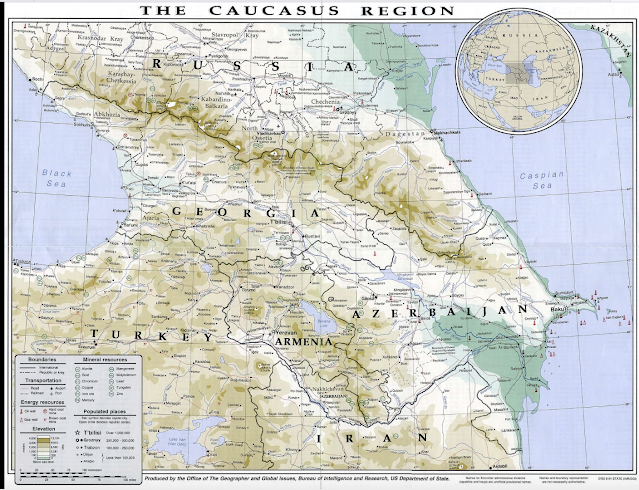Vahe H Apelian
It is said that ‘politics make strange bedfellows” or “politics makes for strange bedfellows”, and the strangest bedfellows are Erdogan, Putin, Aliyev. Of course, the newly elected Iranian president Massoud Pezeshkian will have to deal with the threesome, but my gut feelings tell me it’s mostly a threesome of these three with whom the small land locked Armenia will have to deal with.
They indeed are strange bedfellows for their interests coalesce on an issue but not in another in their backyards or yards, causing turmoil in their bedroom. They cannot afford to divorce and search for new partners, even though they are promiscuous to begin with. After all politics does not make room for monogamous relationship. Erdogan has been in a long-term relationship with NATO. Putin is cementing new relationships with the quasi capitalist, quasi communist Chinese strong man president, Xi Jinping and North Korea’s totalitarian dear leader Kim Jong Un. Their smaller partner in bed, Ilham Aliyev, gets lost not knowing with whom to cozy more, Putin or Erdogan, irking one or the other.
I think the war in Ukraine is testing the threesome’s relationship. But, in spite of the ups and downs of the threesome’s relationship, they will have to somehow stay together as strange bedfellows.
The day before yesterday, Al Jazeera reported that “A war of words has broken out between Israel and Turkey after President Recep Tayyip Erdogan threatened his country could intervene militarily in Israel’s war on Gaza. Turkish and Israeli officials unleashed barbs at one another on Sunday and Monday after Erdogan said in a speech on Sunday that “there is no reason” that Turkey could not act, noting military interventions made in the past in other countries.” Read the other country as Karabakh/Armenia. After hearing Erdogan's verbal assault, Israel’s committed friend Aliyev, could not hold his peace as if nothing has changed in the threesome’s bedroom. He is reported to have said: ““The participation of foreign servicemen in the battles for the territorial integrity of Azerbaijan is unfounded.” The Azeri allegation is obvious. They dare deny Erdogan that Turkey was instrumental in defeating Armenia in the Artsakh. Now that Aliyev and Putin have more than cozied in an unmistakable relationship, Aliyev feels empowered enough to deny his Turkic friend Erdogan what is rightfully Erdogan’s and claims that the victory was his doing, surely thanks to Azeri blossoming amorous relationship with Putin.
This was not the case right after the war. Two days after the Armenian capitulation of the second Artsakh war, on 10/12/2020, Levon Sharoyan reported that “the Arabic section of the Turkish state-run broadcaster covered the recent events in Karabakh. The three participants analyzed the situation and clarified Turkey's views, which clearly showed what a long and consistent diplomatic and military efforts Turkey had vested to “swallow” Artsakh. I present to my readers a bunch of confirmations made from the Turkish media.
- “Turkey's role in this victory was simply the key. We were the ones who trained the Azeri army. We were the ones who equipped it with modern equipment. We will no longer feel the need to keep this a secret.”
- “In this glorious victory by Azerbaijan, we can say that President Putin also stood by the Azeris. We are thankful for his fair role.”
- “According to the agreement on November 10, in a few days, the Armenian occupation forces will leave the Agdam region forever. Soon 150 thousand former residents of Agdam will return to their homes and thus the region will regain its native Azeri character.”
- “Nakhichevan will take a deep breath henceforth! From now on, Turkey will have a land connection and a bridge with its brother Azerbaijan from Kars and Nakhichevan. This vital corridor will open the way we longed for to reach to our Turkic-speaking countries of Central Asia.”
- “If Armenia tries not to implement the signed agreement, it will be hit very hard on the head with a joint Russian-Turkish fist. Let them have no doubt about this.”
- “Tomorrow, Friday, a large Russian military delegation will arrive in Ankara to discuss with us the details of the unwavering application of the November 10 agreement. Already yesterday, the defense ministers of our two friendly countries signed a memorandum (via an internet meeting), according to which Turkey is setting up a joint monitoring body with Russia to monitor the security situation in Karabakh. We will be allowed to have drones to curb possible illegal movements of the Armenians.”
- "Pashinyan will most likely leave his seat. The new Armenian government must be a government "sponsored" by Turkey."
- “Karabakh must be rebuilt by Turkish businessmen. We have developed serious programs in this regard. Of course, Karabakh Armenians will also be allowed to come and live there as full citizens of Azerbaijan. They will see that under the auspices of the Azeri state, they will feel much calmer and happier than under the shadow of Yerevan.” (See the link below).
Naturally it is up to readers to draw their conclusions from the doings of these three regional powers, as far as Armenia is concerned. Armenia is not going anywhere. It will have to remain there put, and will have to deal with them. One thing is for sure. Rhetorics and sentimental statements have no room to assure the longevity of the State of Armenia in that region.
Note: I attached the links to Levon Sharoyan’s reporting on Turkish media during and after the second Artsakh war.
Turkish media during the second Artsakh war:
http://vhapelian.blogspot.com/2020/10/what-does-turkish-media-say.html
Turkish media after the second Artsakh war:
https://vhapelian.blogspot.com/2021/05/let-me-ease-you-pain-dear-artsakh.html







